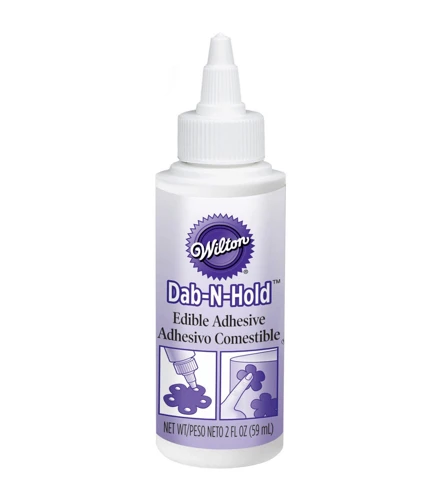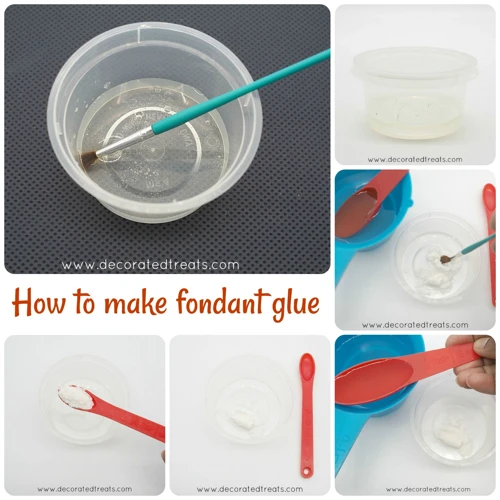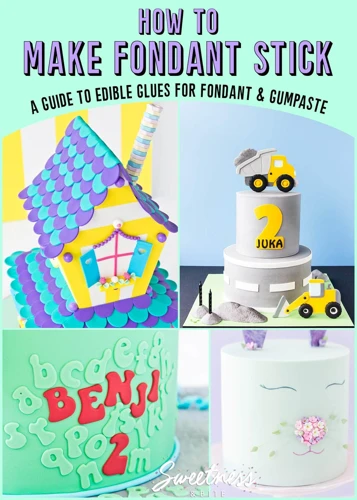When it comes to cake decorating with fondant, achieving the perfect finish is all about mastering the art of adhesion. Whether you’re a seasoned baker or a beginner looking to enhance your skills, understanding how to expertly glue fondant is crucial. This comprehensive guide will equip you with the knowledge to use fondant adhesive techniques that ensure your creations not only look spectacular but also endure the duration of your event.
Introduction to Cake Decorating with Fondant
Fondant, with its smooth and pliable nature, offers a sleek canvas for bakers looking to transform their confections into works of art. However, the challenge arises when pieces need to be affixed to one another or to the cake itself. Just like assembling the pieces of a puzzle, the right adhesive can make all the difference in the presentation and longevity of your design.
Fondant Adhesive Techniques
There are several methods to secure fondant accents, ranging from simple water brushes to specialized edible glues. Each technique varies in strength and drying time, so choosing the appropriate method is essential for each unique decoration. Creating a flawless finish often involves a trial-and-error process to discover which method works best for your project.
DIY Fondant Glue: Safe and Edible Solutions
For those who prefer the homemade touch, DIY fondant glue is a safe and edible option that can be easily made with ingredients you may already have in your kitchen. Not only does this give you full control over the ingredients, but it also ensures that your edible creations remain non-toxic and consumable.
Homemade Fondant Glue Recipe
Creating your own homemade fondant glue recipe is straightforward. You’ll need just a few teaspoons of water and a small amount of powdered sugar or tylose powder. Simply dissolve the powder in the water to create a paste-like consistency, and you’ve got an effective glue that’s ready to use.
Using Tylose Powder for Fondant Glue
For a stronger bond, using tylose powder for fondant is an excellent choice. Tylose powder is a binding agent that, when mixed with water, forms a glue that dries clear and holds decorations securely in place. This option is particularly useful for intricate or heavy pieces that require a firmer hold.
Fondant Glue Without Tylose: Alternatives
If you’re in a pinch or prefer to avoid tylose, there are other fondant glue without tylose options. Simple syrup, made from equal parts sugar and water, can be boiled and cooled to create a sticky syrup that works well for lighter decorations. Another alternative is melted marshmallow, which can act as a quick-drying and strong adhesive.
Securing Fondant Decorations with Precision
When it comes to securing fondant decorations, precision is key. Not only do you want your decorations to stick, but you also want to avoid any visible traces of glue that could mar the appearance of your cake.
Gluing Fondant Pieces Together
The process of gluing fondant pieces requires a careful touch and the correct consistency of edible glue. For larger pieces, consider using a small brush to apply the glue, ensuring coverage without excess. For smaller details, a toothpick can be used to place tiny dots of glue precisely where needed.
Edible Glue for Fondant: How to Choose
When selecting an edible glue for fondant, consider the weight and size of the piece you are attaching. Lighter pieces may only need a dab of water, while heavier decorations may require a stronger homemade glue or tylose-based adhesive. The humidity and temperature can also affect your choice, as some glues may not hold up well in certain conditions.
Advanced Fondant Decoration Tips
Once you’ve grasped the basics, implementing advanced fondant decoration tips can elevate your designs to professional levels. Understanding how to work with different fondant textures and ensuring long-lasting adhesion are paramount in creating complex and detailed decorations that stand out.
Working with Different Fondant Textures
Not all fondant is created equal, and the texture can vary depending on the brand or how it’s been conditioned. When working with firmer fondant, kneading it until pliable can make the gluing process easier. Conversely, softer fondant may require a little cornstarch to prevent sticking and to create a more manageable surface for gluing.
Ensuring Long-Lasting Fondant Adhesion
To guarantee that your fondant accents stay put, it’s essential to give the glue enough time to set. Patience is crucial; rushing the drying process can cause pieces to slide or fall off. Additionally, storing the cake in a cool, dry place will help maintain the integrity of the glue and keep your decorations secure.
If you’re a craft enthusiast or a dessert decorator, understanding the right way to use glue is crucial for your projects. For those who work with fondant and need guidance on sticking it perfectly, our article on How To Glue Fondant provides helpful tips and techniques. Additionally, if you’re dealing with stubborn lash glue, our guide on how to soften lash glue can be a lifesaver. Paper crafters using the quilling technique will appreciate our insights on how to glue quilling paper. And if you need to adjust the consistency of your adhesive for various crafts, our article on how to thin glue for crafts will show you the steps to achieve the perfect viscosity.
Conclusion: Mastering Fondant Work for Cake Decorating
The journey to becoming proficient in fondant work involves practice and patience. With the ultimate guide to gluing fondant for decoration at your fingertips, you’re now equipped with the techniques and tips to ensure your edible masterpieces remain intact and impressive. Remember, the right glue can make all the difference between a good cake and a great one. Now, go forth and create with confidence, knowing that your fondant decorations will stay in place as you envisioned.


